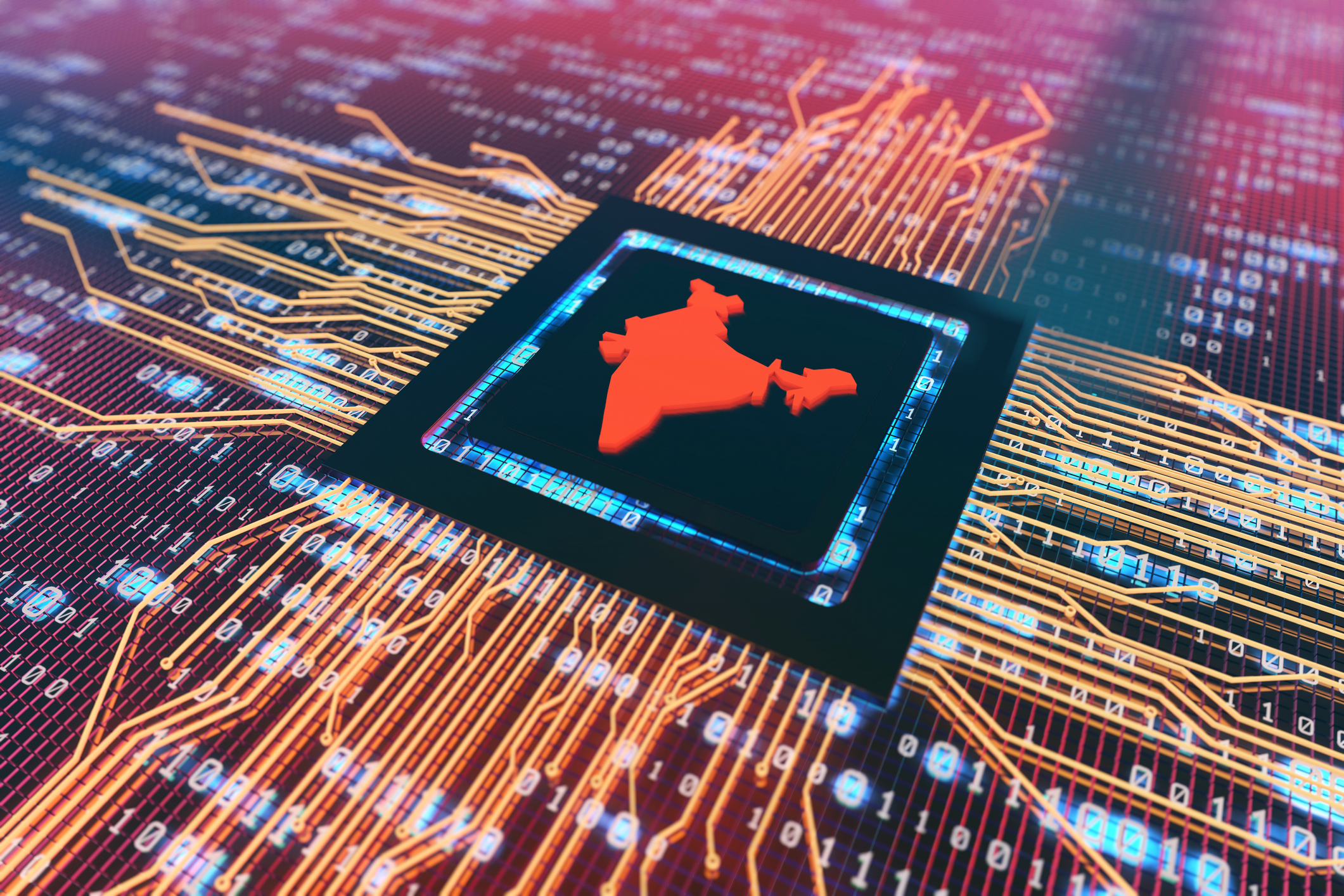India's Semiconductor Sector Eyes Expansion Amid AI Chip Boom: The Kiplinger Letter
As Wall Street’s love affair with chip firms continues, a recent report highlights India’s plans to expand its semiconductor industry.


To help you understand what is going on in the technology and manufacturing sectors and what we expect to happen in the future, our highly experienced Kiplinger Letter team will keep you abreast of the latest developments and forecasts (Get a free issue of The Kiplinger Letter or subscribe). You'll get all the latest news first by subscribing, but we will publish many (but not all) of the forecasts a few days afterward online. Here’s the latest…
In addition to the exploding sales of artificial intelligence chips this year the rest of the semiconductor industry continues to look good — either with solid sales growth or sales set to rebound in the second half. AI chip sales are only about 5%-10% of the $600 billion industry.
Inventory levels are back under control for memory chips, after a huge glut last year. Supply chains are stable, for the most part. And there’s strong order growth, a good predictor of future sales. It doesn’t seem as though anything will stop Wall Street’s love affair with chip firms, especially after Nvidia’s recent results beat expectations. Even chipmakers in the automotive and industrial space, now slogging through weak sales, should rebound in sales by year-end. That’s expected to reignite investor interest. Notable risks aren’t likely to dim the outlook but continue to loom, such as geopolitical tensions, the war in Ukraine and U.S. political dysfunction.
From just $107.88 $24.99 for Kiplinger Personal Finance
Become a smarter, better informed investor. Subscribe from just $107.88 $24.99, plus get up to 4 Special Issues

Sign up for Kiplinger’s Free Newsletters
Profit and prosper with the best of expert advice on investing, taxes, retirement, personal finance and more - straight to your e-mail.
Profit and prosper with the best of expert advice - straight to your e-mail.
Keep an eye on India’s effort to expand its nascent semiconductor industry, according to a recent report by the Information Technology and Innovation Foundation — a tech think tank. The report stems from a federal tech initiative to work with India.
Among the many factors in India’s favor are massive government support, a robust chip workforce, a huge domestic market and competitive labor costs. Many U.S. chip firms already have R&D offices in India, including Intel, Nvidia, and Qualcomm.
Recent developments include memory chipmaker Micron setting up shop, with an assembly and testing facility opening in 2024. AMD is investing $400 million over five years. Plus, the government recently OK’d India’s first major chipmaking plant. A rising Indian chip sector would ease U.S. reliance on Taiwan and China.
Despite promising signs, there are many challenges, ranging from taxation and regulations to transportation and energy. Still, India seems serious about chips
This forecast first appeared in The Kiplinger Letter, which has been running since 1923 and is a collection of concise weekly forecasts on business and economic trends, as well as what to expect from Washington, to help you understand what’s coming up to make the most of your investments and your money. Subscribe to The Kiplinger Letter.
Related stories
- Stock Market Today: Nvidia Tops $2 Trillion in Market Cap
- The Best Semiconductor Stocks to Buy
- Semiconductor Sales Will Bounce Back in 2024: The Kiplinger Letter
- Huawei's Chip Breakthrough Triggers U.S. Scrutiny: The Kiplinger Letter
- Best AI Stocks to Buy: Smart Artificial Intelligence Investments
Profit and prosper with the best of Kiplinger's advice on investing, taxes, retirement, personal finance and much more. Delivered daily. Enter your email in the box and click Sign Me Up.

John Miley is a Senior Associate Editor at The Kiplinger Letter. He mainly covers AI, technology, telecom and education, but will jump on other business topics as needed. In his role, he provides timely forecasts about emerging technologies, business trends and government regulations. He also edits stories for the weekly publication and has written and edited email newsletters.
He holds a BA from Bates College and a master’s degree in magazine journalism from Northwestern University, where he specialized in business reporting. An avid runner and a former decathlete, he has written about fitness and competed in triathlons.
-
 Fed's Rate Cuts Could Have Impacts You Might Not Anticipate
Fed's Rate Cuts Could Have Impacts You Might Not AnticipateUnderstanding how lower interest rates could impact your wallet can help you determine the right financial moves to make.
-
 Past Performance Is Not Indicative of Your Adviser's Expertise
Past Performance Is Not Indicative of Your Adviser's ExpertiseMany people find a financial adviser by searching online or asking for referrals from friends or family. This can actually end up costing you big-time.
-
 I'm want to give my 3 grandkids $5K each for Christmas.
I'm want to give my 3 grandkids $5K each for Christmas.You're comfortably retired and want to give your grandkids a big Christmas check, but their parents are worried they might spend it all. We ask the pros for help.
-
 AI Appliances Aren’t Exciting Buyers…Yet
AI Appliances Aren’t Exciting Buyers…YetThe Kiplinger Letter Artificial intelligence is being embedded into all sorts of appliances. Now sellers need to get customers to care about AI-powered laundry.
-
 What to Expect from the Global Economy in 2026
What to Expect from the Global Economy in 2026The Kiplinger Letter Economic growth across the globe will be highly uneven, with some major economies accelerating while others hit the brakes.
-
 The AI Boom Will Lift IT Spending Next Year
The AI Boom Will Lift IT Spending Next YearThe Kiplinger Letter 2026 will be one of strongest years for the IT industry since the PC boom and early days of the Web in the mid-1990s.
-
 Amid Mounting Uncertainty: Five Forecasts About AI
Amid Mounting Uncertainty: Five Forecasts About AIThe Kiplinger Letter With the risk of overspending on AI data centers hotly debated, here are some forecasts about AI that we can make with some confidence.
-
 Worried About an AI Bubble? Here’s What You Need to Know
Worried About an AI Bubble? Here’s What You Need to KnowThe Kiplinger Letter Though AI is a transformative technology, it’s worth paying attention to the rising economic and financial risks. Here’s some guidance to navigate AI’s future.
-
 Will AI Videos Disrupt Social Media?
Will AI Videos Disrupt Social Media?The Kiplinger Letter With the introduction of OpenAI’s new AI social media app, Sora, the internet is about to be flooded with startling AI-generated videos.
-
 What Services Are Open During the Government Shutdown?
What Services Are Open During the Government Shutdown?The Kiplinger Letter As the shutdown drags on, many basic federal services will increasingly be affected.
-
 The Economy on a Knife's Edge
The Economy on a Knife's EdgeThe Letter GDP is growing, but employers have all but stopped hiring as they watch how the trade war plays out.